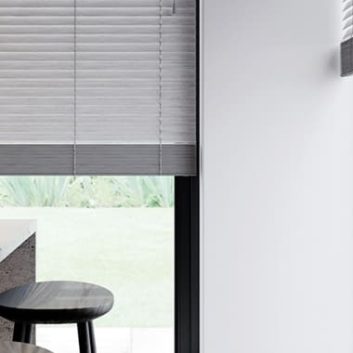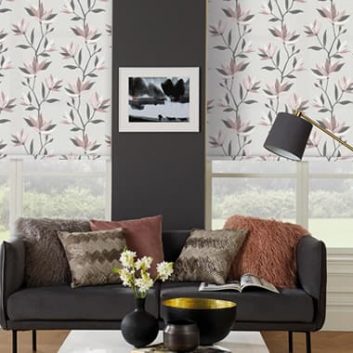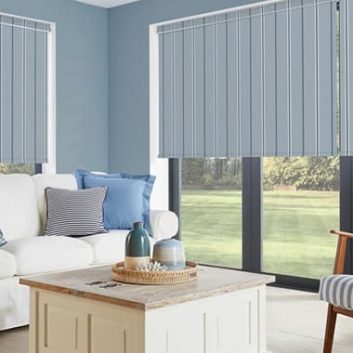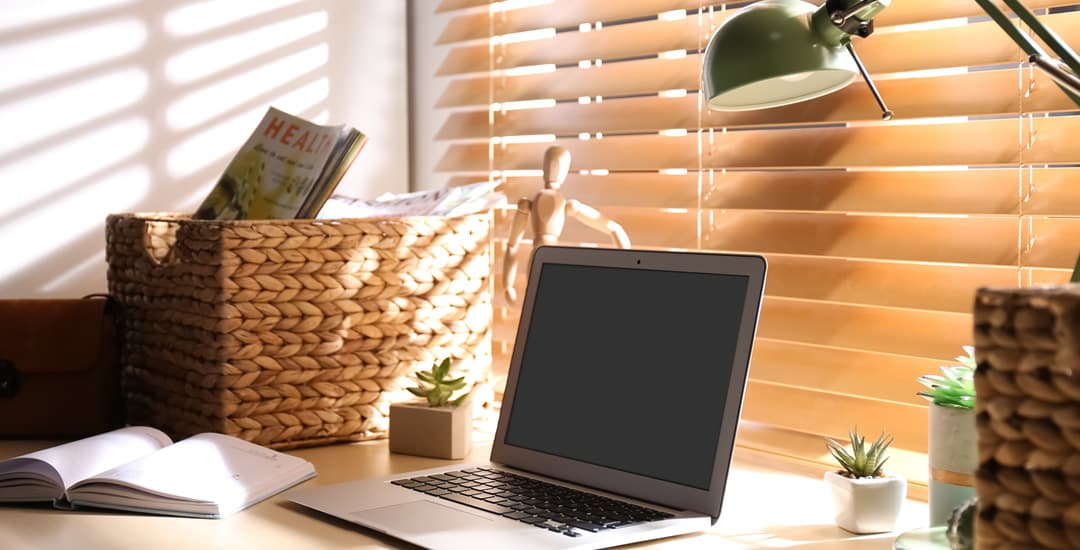
2020 saw many desk-based employees become surprise remote workers quite literally overnight, which also saw many folk segue from “really wish I could work from home” to “haven’t got dressed for three days, adult conversation is a distant memory, think my eight-year-old just submitted an expenses claim for a PS5.”
For most people back on that fateful day in early 2020 when they shuffled out of their workplaces clutching a laptop, pot plant, and directions to ensure that their home broadband had military-grade encryption and that their partner wasn’t actually a corporate spy, the reality of working from home proved to be rather different from the fantasy.
Another facet of this is that many if not most new remote workers (and their employers) thought that after a couple of weeks of inconvenience, everything would go back to “normal.” Yet here we are almost a year on, with many workers still camped out for eight hours a day on a pop-up tray-table in a guest bedroom, muttering with increasing desperation as the weeks go by that “it’s only temporary.”
As time passes and the chances of your home office becoming your forever office grow ever-stronger, now might be the time to stop thinking of things as temporary, and start making your home office a bit more functional and pleasant; starting with the lighting.
Most people don’t pay any conscious mind to the lighting in their home office; even if they think to themselves “it’s a bit dingy in here” literally every time they walk in there. For this reason, most people’s home office lighting falls somewhere on the spectrum between “mediocre” and “lighting provision? Meh, when it gets dark, I just move my nose closer to the screen.”
Even though it’s easy to overlook, the lighting in your home office really is worth getting right, as poor lighting or the wrong type of lighting can absolutely kind of ruin your life, give you headaches, and make you more irritable than normal.
As if that’s not motivation enough, well, if you always think you look perfectly presentable until the first Zoom call of the day makes it clear that you actually look like Grotbags after a night on the lash, well that could actually be down to the lighting in your home office too.
Now that I’ve got you invested in sorting out your home office lighting provision for all of the right reasons, let’s look at why your home office lighting is probably a bit craptacular in the first place, and how to fix it.
Contents
Section 1: Your home office space was probably unused before for a good reason.
Section 2: Why the average home office has terrible lighting.
Section 3: Why does it matter if my home office has terrible lighting?
Section 4: What exactly constitutes “good” lighting?
Section 5: How to maximise natural light in your home office.
Section 6: Reducing glare and filtering the light in your home office.
Section 7: Choosing the right artificial lighting for your home office.
The space you found for your home office was probably available for a reason
Assuming that you didn’t have a home office prior to the sudden call to work from home and/or that your existing home office was more ornamental than functional until that point, the chances are that where you set up your office or desk was determined more than anything by where you could find a space.
Other factors such as being able to pick up a good broadband signal or having enough plug points probably factored into it, but the main part of the decision for most people came down to where there was unused space, being a corner or nook with enough room to plonk a desk (such as under the stairs) or a room that was unused or rarely used, like a guest bedroom or boxroom.
This makes sense; but something else that makes sense, unless of course you live in a mansion and could pick a new room every day without ever running out of options, is that the space you found empty or were able to free up without too much hassle was likely empty or free for a reason.
Why? Well, that depends on the room in question, but tends to be self-evident when you look at it critically. This might be because it’s a cold room, one with poor light (or no windows at all), without enough room to really do anything comfortably, is a bit damp, or otherwise isn’t a space that you naturally gravitate to because something about it makes it a choice of last resort.
For corners and spare spaces, you manage to free up to place a desk, the same sort of principle applies. Under-stairs office nooks look amazing on the pages of glossy magazines, but are less cool in practice; you risk partial decapitation every time you stand up, for starters, and such spaces tend to be challenging to light.
Desks in the corners of rooms that serve a double-duty are hardly ideal if other people are coming and going or you find your leisure time is spent staring at your workspace.
As for those kitchen or dining room table offices, well if there’s one thing that makes homeworking even more annoying than it might otherwise be, it is making the daily choice between hot-desking in your own home or risking chicken pasta alfredo all over your latest sales report.
Why your home office probably has terrible lighting
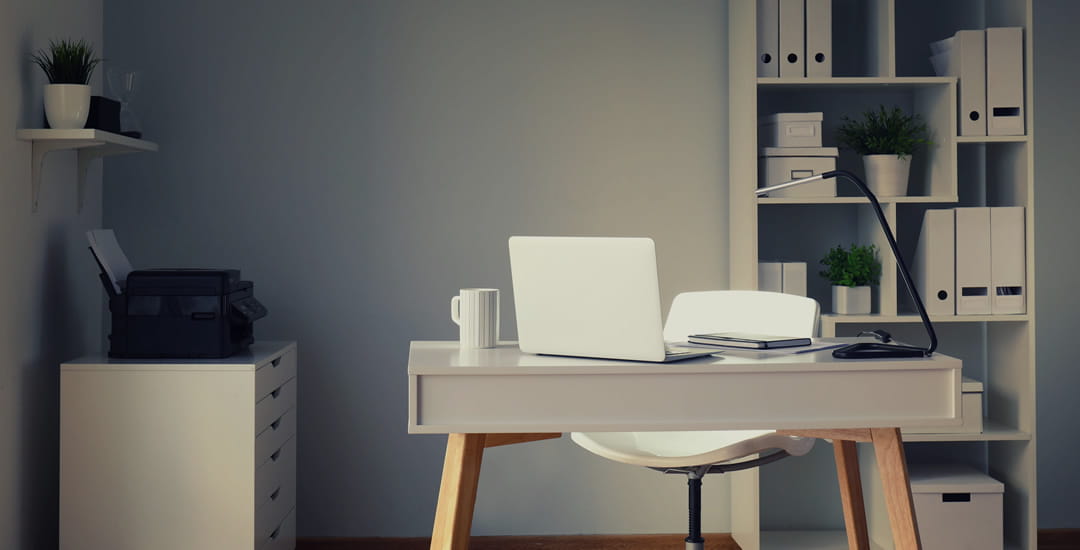
As I’ve tried to outline above, unless your home office was really well thought out and situated in a room that was picked as the best room for the purpose rather than being the only available choice, there’s a good chance it comes accompanied by any number of downsides.
The room being cold, cramped, or too close to the eight-year-old’s drum kit are just a few such reasons, but the most common problem with home offices is that the lighting within them is abysmal.
It might seem like a small thing at first; and obviously if you’re having to work from home, you may well be a bit resistant to sacrificing part of your home to your job (and quite justifiably so) and potentially losing the use of a “good” room or area of the house.
But the negative impacts of spending a huge amount of time in a room with poor lighting, particularly if you’re trying to be productive in there, really should not be overlooked.
So my home office apparently has bad lighting. And?
Put simply, lighting is important; and poor lighting (“poor” in any context, from too dim, to too bright, to the wrong type of light, to the wrong focus of the light and everything in between) can absolutely ruin your life, as well as your work. This might manifest as you feeling perpetually irritable, being prone to headaches, and having problems concentrating, among other things.
All of these things are problems that many people are struggling with already due to Covid restrictions and the pandemic’s knock-on effects; but they are all also things that simply trying to work in poor lighting can cause too.
Even if you don’t want to spend a whole lot of time or money improving your home office, a little bit of outlay on something as important as lights can really improve your life. Additionally, your employer should theoretically pony up all or most of the spend involved if it is for something you actually need for your work (like proper lighting) rather than things you “need” need, like that gold-coloured pineapple-shaped pen holder.
What constitutes “good” lighting?
Having good lighting in your home office can make your work easier (for real) and actually make your life better too, I kid you not.
But what IS good lighting? Several things. It is light that is bright enough to enable you to see comfortably without being too bright or making you squint, and it needs to be the right type or spectrum of light too; after all, nobody ever spent a day under a flickering strip light and left work feeling refreshed and cheerful, did they.
You might need to incorporate different types of light for different purposes, and even different lights at different times of day.
“Good” lighting is ideally natural light, if you can get enough of it. If natural light isn’t possible or there aren’t enough hours of it available when you’re working (particularly in winter) artificial lighting that emulates natural lighting in terms of brightness and colour spectrum is the next best thing, and can be used in support of natural light when needed.
Maximising natural light
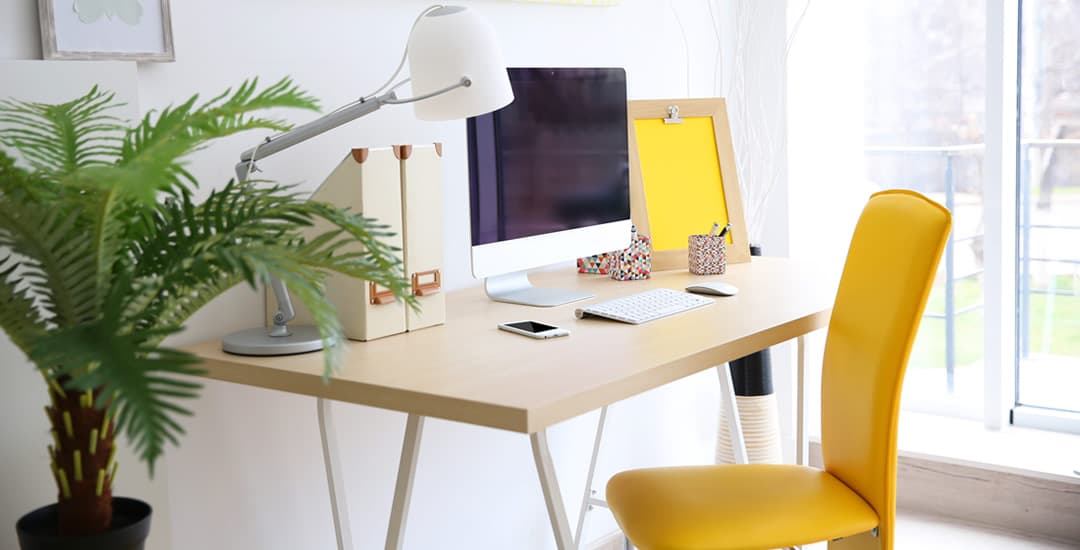
The first thing to look at then when it comes to improving the lighting in your home office is to maximise the natural light it gets. If your home office is a boxroom without any windows, feel free to skip the next couple of steps…
Assuming you do have windows, start with the basics. Do you actually open the curtains or blinds fully? Are the windows reasonably clean? Is there a giant overgrown tree or swathe of ivy occluding the window that needs to meet a machete sooner rather than later?
Do the curtains, blinds, or nets expose enough of the window when they are open, or do they cover half the glass even when you move them to the side? Are there oddments of furniture blocking the light from the windows?
Look at addressing all of these things to maximise the natural light available, and see how well this serves you. The chances are that even if the room itself tends to be bright and well lit, you’ll need some supplementary lighting anyway, but going as far as you can with natural light first is a good start.
Reducing glare
Getting plenty of natural light to your home office is a Good Thing, but not if you’re telling yourself that through clenched teeth with squinting eyes because you’re being blinded by direct sun, or because the way the sun hits your monitor after lunch makes you unable to see.
If possible, look at mitigating glare rather than going back to life as a mole-person just to retain the power of sight.
What most of us do instinctively if the sun moves around and blinds us or causes screen glare is to get up and close the curtains or blinds or otherwise block the sun; but it is better to try to reduce glare without cutting off your natural light entirely.
Can you reposition your desk, adjust the angle of your PC screen, or use an anti-glare screen guard? What about getting office blinds that you can use to occlude or diffuse the light to keep the room bright without glare? Vertical blinds or Venetian blinds are a good and also economical pick for home offices, as you can adjust not just how much of the window they cover at any given point, but also the angle that the slats lie at to block out that annoying sliver of sun without turning the whole process into a game of daytime-night-time.
Choosing artificial lighting that won’t burn your retinas
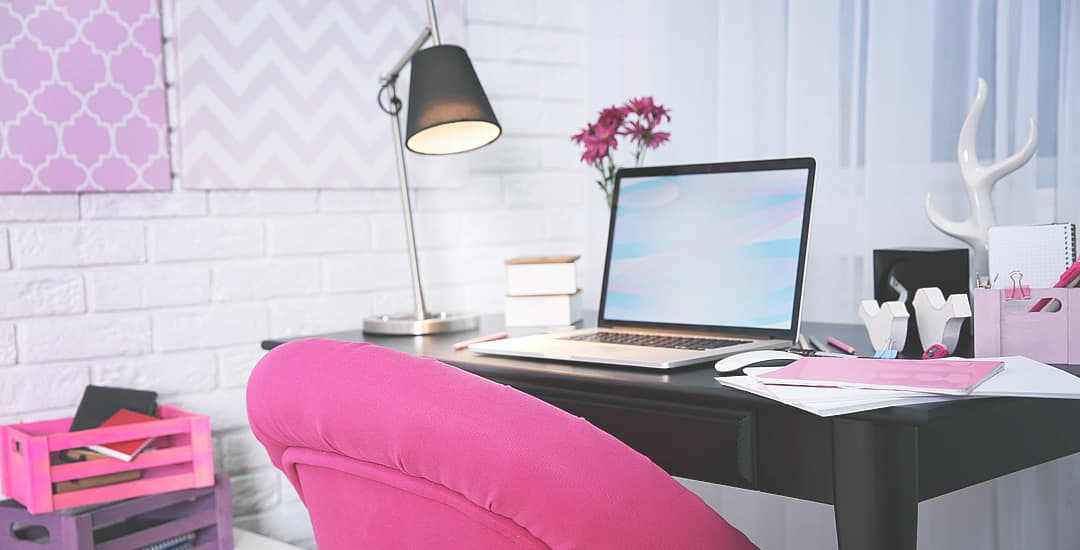
Finally, even if you’re getting great natural light to your office but especially if you’re not, you’ll need to supplement that with some artificial lighting, and a £6 Ikea desk lamp or that 40w ceiling bulb that came with the house isn’t really going to cut it.
You probably spend a lot of time in your home office, which means that it has the potential to have a relatively large impact on your mood, productivity, and physical health too; so why let it ruin your life for the sake of stumping up a few quid for a daylight spectrum bulb and the right type of lamp?
Warm white bulbs of around 700 lumens (which is equivalent to around 60w in old money, but is more diffuse, natural, and pleasant) are a good pick for your main or ceiling light, as they ensure you can see everything properly without creating screen glare, or making you feel like you’re about to be interrogated by the Stasi.
For spotlights and directional lamps, try to keep these within the same sort of 700 lumen light spectrum to keep your eyes refreshed and reduce potential headaches and eye strain; and consider choosing dimmable bulbs too, or smart lighting controls that you can set to reduce in brightness over the final hour of your workday to help your own body clock to maintain a healthy routine too.

